ALL MOUNTAIN SKIS WITH BINDINGS
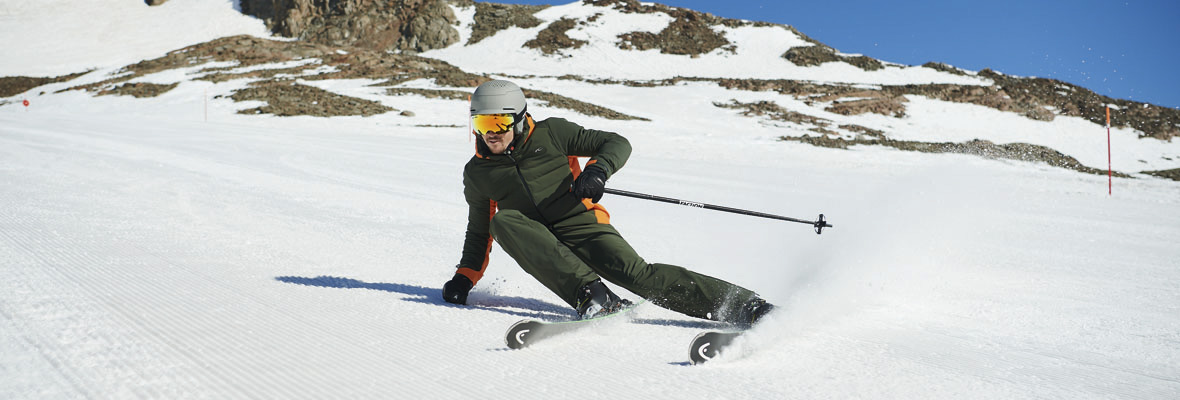
If you´re not really comfortable to go off-track and if race skis are just too racy for you, then a pair of Allmountain Skis is exactly what you need. With their special construction, they are hand-made for the use on and off-pisteon slopes all around the world. We provide all the high-level gear from Salomon, Rossignol, Atomic, Head, Elan... just to name a few.
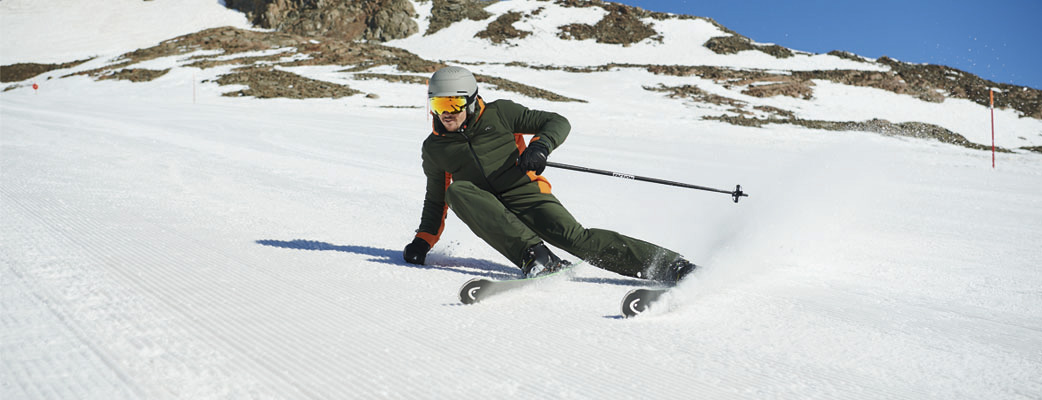

- - 34 %
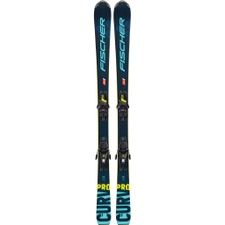 FischerThe Curv Pro Jr + FJ7 CA Jr 22/23 Skis with bindings KidsMSRP 299,90 €199,00 €Available Sizes:110120130
FischerThe Curv Pro Jr + FJ7 CA Jr 22/23 Skis with bindings KidsMSRP 299,90 €199,00 €Available Sizes:110120130 - - 27 %
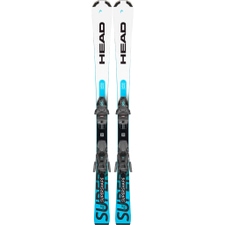 HeadSupershape JRS + 7.5 GW CA 23/24 Ski with Binding KidsMSRP 299,95 €219,00 €Available Sizes:110120130
HeadSupershape JRS + 7.5 GW CA 23/24 Ski with Binding KidsMSRP 299,95 €219,00 €Available Sizes:110120130
- - 34 %
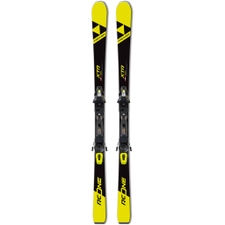 FischerXTR RC One Rentaltrack + RS 10 PR 22/23 Ski with BindingMSRP 299,95 €199,00 €Available Sizes:140
FischerXTR RC One Rentaltrack + RS 10 PR 22/23 Ski with BindingMSRP 299,95 €199,00 €Available Sizes:140 - - 45 %
 HeadSupershape e-Magnum + PRD 12 GW 22/23 Skis with bindingsMSRP 899,95 €499,00 €Available Sizes:170177
HeadSupershape e-Magnum + PRD 12 GW 22/23 Skis with bindingsMSRP 899,95 €499,00 €Available Sizes:170177
- - 39 %
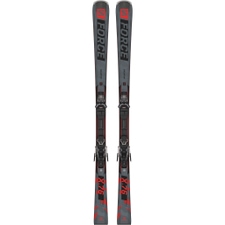 SalomonS/Force X76 Ti. + M11 22/23 Skis with BindingsMSRP 649,95 €399,00 €Available Sizes:163170177
SalomonS/Force X76 Ti. + M11 22/23 Skis with BindingsMSRP 649,95 €399,00 €Available Sizes:163170177
- - 38 %
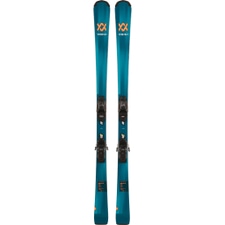 VölklDeacon Pro + 7.0 vMotion 23/24 Ski with Binding KidsMSRP 319,95 €199,00 €Available Sizes:120130140160
VölklDeacon Pro + 7.0 vMotion 23/24 Ski with Binding KidsMSRP 319,95 €199,00 €Available Sizes:120130140160 - - 34 %
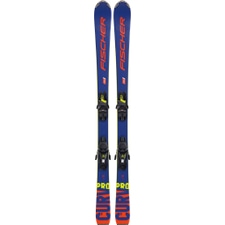 FischerThe Curv Pro + FS 7 GW 22/23 Ski with Binding KidsMSRP 299,90 €199,00 €Available Sizes:110120130150160
FischerThe Curv Pro + FS 7 GW 22/23 Ski with Binding KidsMSRP 299,90 €199,00 €Available Sizes:110120130150160 - - 43 %
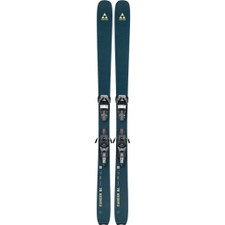 FischerXTR Ranger 84 + Attack 11 D 23/24 Ski with BindingMSRP 699,95 €399,00 €Available Sizes:153160
FischerXTR Ranger 84 + Attack 11 D 23/24 Ski with BindingMSRP 699,95 €399,00 €Available Sizes:153160 - - 33 %
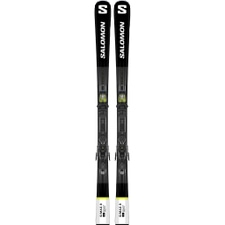 SalomonS/Max 8 + M11 GW L80 22/23 Skis with bindingsMSRP 599,95 €399,00 €Available Sizes:160165170175
SalomonS/Max 8 + M11 GW L80 22/23 Skis with bindingsMSRP 599,95 €399,00 €Available Sizes:160165170175
- - 42 %
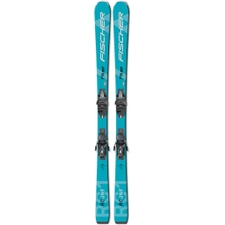 FischerRC One F16 Lite SLR + RS9 SLR 21/22 Ski with Binding WomenMSRP 429,00 €249,00 €Available Sizes:145
FischerRC One F16 Lite SLR + RS9 SLR 21/22 Ski with Binding WomenMSRP 429,00 €249,00 €Available Sizes:145 - - 22 %
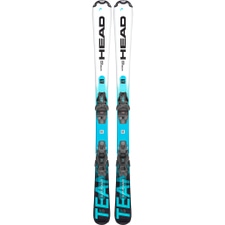 HeadSupershape Team Easy + JRS 4.5 GW 23/24 Ski with Binding KidsMSRP 204,95 €159,00 €Available Sizes:778797107117
HeadSupershape Team Easy + JRS 4.5 GW 23/24 Ski with Binding KidsMSRP 204,95 €159,00 €Available Sizes:778797107117
- - 46 %
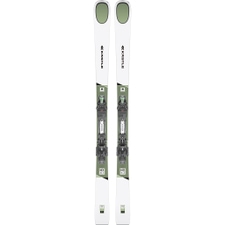 KästleMX83 + K12 PRW GW 22/23 Skis with bindingsMSRP 1298,95 €699,00 €Available Sizes:161168
KästleMX83 + K12 PRW GW 22/23 Skis with bindingsMSRP 1298,95 €699,00 €Available Sizes:161168
- - 32 %
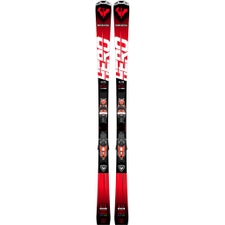 RossignolHero Elite MT CA + K X12 23/24 Ski with BindingMSRP 729,95 €499,00 €Available Sizes:153167175183
RossignolHero Elite MT CA + K X12 23/24 Ski with BindingMSRP 729,95 €499,00 €Available Sizes:153167175183 - - 29 %
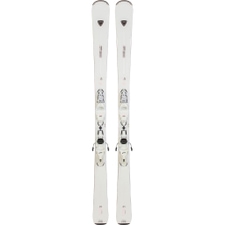 RossignolNova 8 Ca + Xp11 23/24 Ski with Binding WomenMSRP 619,95 €439,00 €Available Sizes:149156163
RossignolNova 8 Ca + Xp11 23/24 Ski with Binding WomenMSRP 619,95 €439,00 €Available Sizes:149156163 - - 40 %
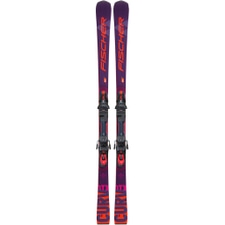 FischerRC4 The Curv DTX MT + RSX Z12 PR 22/23 Skis with bindings WomenMSRP 999,90 €599,00 €Available Sizes:150164171
FischerRC4 The Curv DTX MT + RSX Z12 PR 22/23 Skis with bindings WomenMSRP 999,90 €599,00 €Available Sizes:150164171 - - 46 %
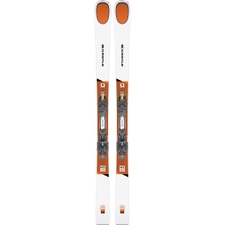 KästleMX 88 + K12 PRW GW 22/23 Skis with bindingsMSRP 1298,95 €699,00 €Available Sizes:166187
KästleMX 88 + K12 PRW GW 22/23 Skis with bindingsMSRP 1298,95 €699,00 €Available Sizes:166187
- - 55 %
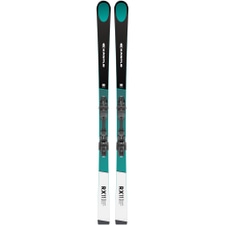 KästleRX11 + K12 TRI GW 22/23 Skis with bindingsMSRP 1098,95 €499,00 €Available Sizes:155165168173178
KästleRX11 + K12 TRI GW 22/23 Skis with bindingsMSRP 1098,95 €499,00 €Available Sizes:155165168173178
- - 36 %
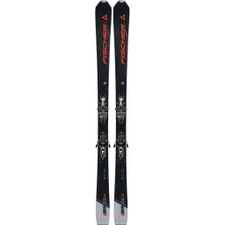 FischerRC One 82 GT + RSW 11 GW 23/24 Ski with BindingMSRP 779,95 €499,00 €Available Sizes:166173180
FischerRC One 82 GT + RSW 11 GW 23/24 Ski with BindingMSRP 779,95 €499,00 €Available Sizes:166173180 - - 45 %
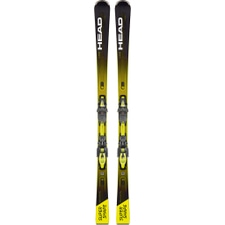 HeadSupershape e-Speed + PRD 12 GW 22/23 Skis with bindingsMSRP 899,95 €499,00 €Available Sizes:163170177184
HeadSupershape e-Speed + PRD 12 GW 22/23 Skis with bindingsMSRP 899,95 €499,00 €Available Sizes:163170177184
- - 50 %
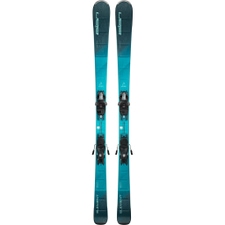 ElanElement W + LS EL 9.0 23/24 Skis with bindings WomenMSRP 499,95 €249,00 €Available Sizes:144152160168176
ElanElement W + LS EL 9.0 23/24 Skis with bindings WomenMSRP 499,95 €249,00 €Available Sizes:144152160168176
- - 47 %
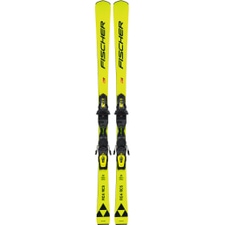 FischerRC4 RCS AR + Z11 PR 22/23 Ski with BindingMSRP 749,00 €399,00 €Available Sizes:160
FischerRC4 RCS AR + Z11 PR 22/23 Ski with BindingMSRP 749,00 €399,00 €Available Sizes:160 - - 42 %
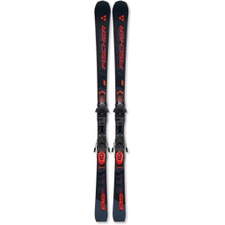 FischerThe Curv DTi + RS11 GW 23/24 Ski with BindingMSRP 829,95 €479,00 €Available Sizes:157164171178
FischerThe Curv DTi + RS11 GW 23/24 Ski with BindingMSRP 829,95 €479,00 €Available Sizes:157164171178 - - 32 %
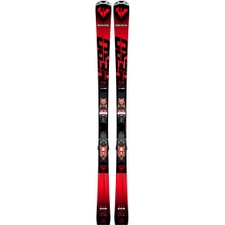 RossignolHero Elite Mt Ti CAM + K NX12 23/24 Ski with BindingMSRP 819,95 €559,00 €Available Sizes:159167
RossignolHero Elite Mt Ti CAM + K NX12 23/24 Ski with BindingMSRP 819,95 €559,00 €Available Sizes:159167 - - 43 %
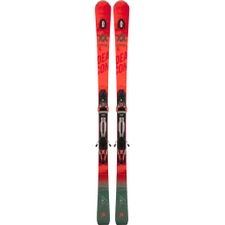 VölklDeacon 74 + rMotion 2 12 GW 21/22 Skis with bindingsMSRP 879,95 €499,00 €Available Sizes:173
VölklDeacon 74 + rMotion 2 12 GW 21/22 Skis with bindingsMSRP 879,95 €499,00 €Available Sizes:173
- - 29 %
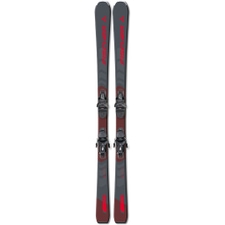 FischerRC Fire + RS9 SLR GW 23/24 Ski with Binding WomenMSRP 349,95 €249,00 €Available Sizes:150160165170
FischerRC Fire + RS9 SLR GW 23/24 Ski with Binding WomenMSRP 349,95 €249,00 €Available Sizes:150160165170 - - 33 %
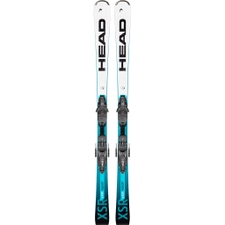 HeadWorldcup Rebels e.XSR + PR 11 GW 23/24 Ski with BindingMSRP 599,95 €399,00 €Available Sizes:170177
HeadWorldcup Rebels e.XSR + PR 11 GW 23/24 Ski with BindingMSRP 599,95 €399,00 €Available Sizes:170177
- - 37 %
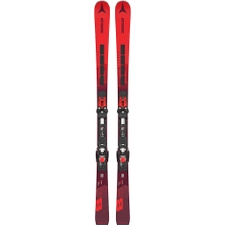 AtomicRedster S8 Revoshock C + X12 GW 23/24 Ski with BindingMSRP 949,95 €599,00 €Available Sizes:149156163
AtomicRedster S8 Revoshock C + X12 GW 23/24 Ski with BindingMSRP 949,95 €599,00 €Available Sizes:149156163
- - 46 %
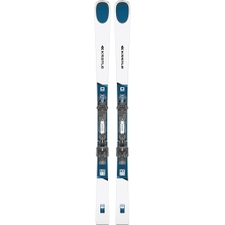 KästleMX75 Triflex + K12 PRW GW 22/23 Skis with bindingsMSRP 1298,95 €699,00 €Available Sizes:172179
KästleMX75 Triflex + K12 PRW GW 22/23 Skis with bindingsMSRP 1298,95 €699,00 €Available Sizes:172179
- - 38 %
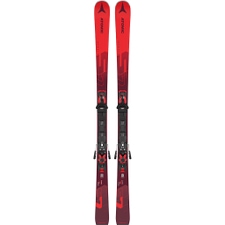 AtomicRedster S7 + M12 GW 23/24 Ski with BindingMSRP 799,95 €499,00 €Available Sizes:163170
AtomicRedster S7 + M12 GW 23/24 Ski with BindingMSRP 799,95 €499,00 €Available Sizes:163170
- - 27 %
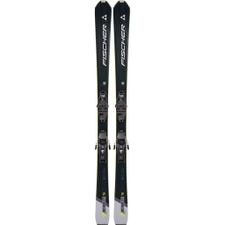 FischerRC One 78 GT + RSW 10 PR 23/24 Ski with BindingMSRP 679,95 €499,00 €Available Sizes:166173
FischerRC One 78 GT + RSW 10 PR 23/24 Ski with BindingMSRP 679,95 €499,00 €Available Sizes:166173 - - 50 %
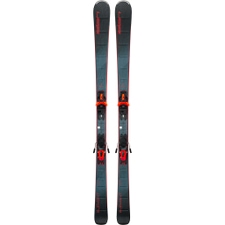 ElanElement + LS EL 10.0 23/24 Skis with bindingsMSRP 499,95 €249,00 €Available Sizes:152
ElanElement + LS EL 10.0 23/24 Skis with bindingsMSRP 499,95 €249,00 €Available Sizes:152
- - 30 %
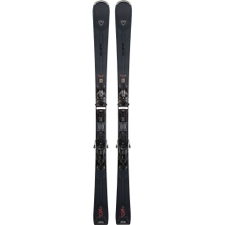 RossignolNova 14 Ti + K Nx12 23/24 Ski with Binding WomenMSRP 779,95 €549,00 €Available Sizes:153160167
RossignolNova 14 Ti + K Nx12 23/24 Ski with Binding WomenMSRP 779,95 €549,00 €Available Sizes:153160167 - - 25 %
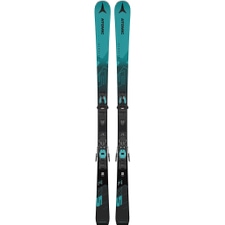 AtomicRedster X5 Blue + M 10 GW 23/24 Ski with Binding Teal Blue/MSRP 599,95 €449,95 €Available Sizes:154168175
AtomicRedster X5 Blue + M 10 GW 23/24 Ski with Binding Teal Blue/MSRP 599,95 €449,95 €Available Sizes:154168175
- - 37 %
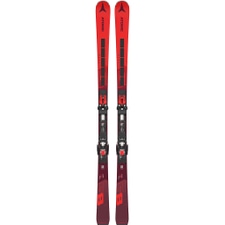 AtomicRedster G8 Revoshock C + X 12 GW 23/24 Ski with BindingMSRP 949,95 €599,00 €Available Sizes:161168175182
AtomicRedster G8 Revoshock C + X 12 GW 23/24 Ski with BindingMSRP 949,95 €599,00 €Available Sizes:161168175182
- - 34 %
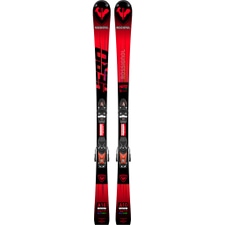 RossignolHero Mulitevent + NX7 LF 22/23 Ski with Binding KidsMSRP 409,95 €269,00 €Available Sizes:141
RossignolHero Mulitevent + NX7 LF 22/23 Ski with Binding KidsMSRP 409,95 €269,00 €Available Sizes:141 - - 31 %
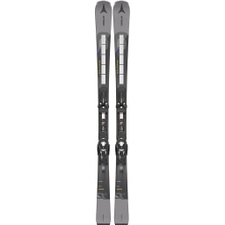 AtomicRedster Q9 Revoshock S + X 12 GW 22/23 Skis with bindingsMSRP 1149,95 €799,00 €Available Sizes:160
AtomicRedster Q9 Revoshock S + X 12 GW 22/23 Skis with bindingsMSRP 1149,95 €799,00 €Available Sizes:160
- - 30 %
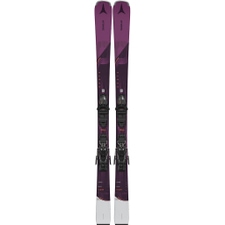 AtomicCloud Q LTD + M 10 GW 23/24 Ski with Binding WomenMSRP 499,95 €349,00 €Available Sizes:140147154161
AtomicCloud Q LTD + M 10 GW 23/24 Ski with Binding WomenMSRP 499,95 €349,00 €Available Sizes:140147154161
- - 25 %
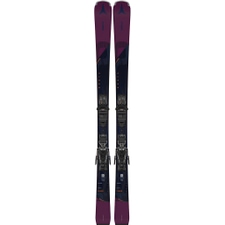 AtomicCloud Q9 + M 10 GW 22/23 Skis with bindings WomenMSRP 599,95 €449,95 €Available Sizes:140147154161
AtomicCloud Q9 + M 10 GW 22/23 Skis with bindings WomenMSRP 599,95 €449,95 €Available Sizes:140147154161
- - 41 %
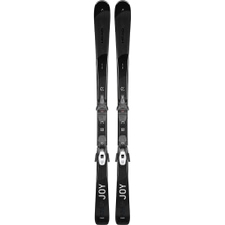 HeadReal Joy + Joy 9 GW SLR 23/24 Ski with Binding WomenMSRP 589,95 €349,00 €Available Sizes:143148153158163
HeadReal Joy + Joy 9 GW SLR 23/24 Ski with Binding WomenMSRP 589,95 €349,00 €Available Sizes:143148153158163
- - 29 %
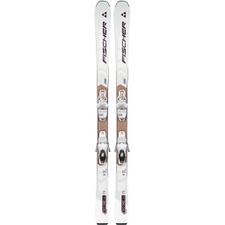 FischerRC One Lite 72 SLR + RS 9 GW 23/24 Ski with Binding WomenMSRP 349,95 €249,00 €Available Sizes:145
FischerRC One Lite 72 SLR + RS 9 GW 23/24 Ski with Binding WomenMSRP 349,95 €249,00 €Available Sizes:145 - - 43 %
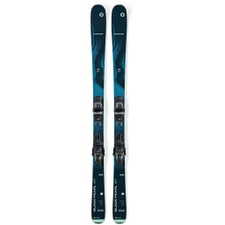 BlizzardBlack Pearl 82 SP + TPC 10 GW 22/23 Skis with bindings WomenMSRP 699,95 €399,00 €Available Sizes:152173
BlizzardBlack Pearl 82 SP + TPC 10 GW 22/23 Skis with bindings WomenMSRP 699,95 €399,00 €Available Sizes:152173 - - 44 %
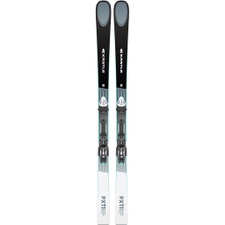 KästlePX 71 + K11 PRD GW 22/23 Skis with bindingsMSRP 898,95 €499,00 €Available Sizes:162176
KästlePX 71 + K11 PRD GW 22/23 Skis with bindingsMSRP 898,95 €499,00 €Available Sizes:162176
- - 46 %
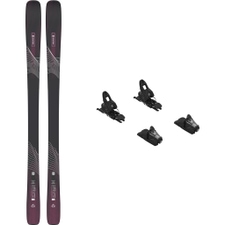 SalomonStance W 84 22/23 Skis with bindings WomenMSRP 649,95 €349,00 €Available Sizes:175
SalomonStance W 84 22/23 Skis with bindings WomenMSRP 649,95 €349,00 €Available Sizes:175
- - 36 %
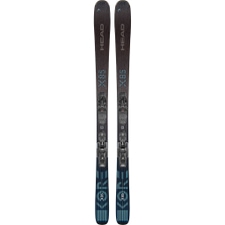 HeadKore X 85 + PRW 11 GW 23/24 Ski with BindingMSRP 699,95 €449,00 €Available Sizes:163170184
HeadKore X 85 + PRW 11 GW 23/24 Ski with BindingMSRP 699,95 €449,00 €Available Sizes:163170184
- - 33 %
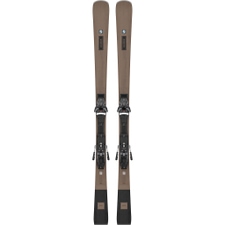 SalomonE S/Max N°12 + Z12 GW 23/24 Skis with bindingsMSRP 749,95 €499,00 €Available Sizes:162
SalomonE S/Max N°12 + Z12 GW 23/24 Skis with bindingsMSRP 749,95 €499,00 €Available Sizes:162
- - 39 %
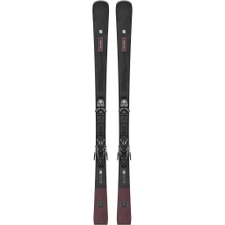 SalomonE S/Max N°10 + M11 GW 23/24 Skis with bindings WomenMSRP 649,95 €399,00 €Available Sizes:155162169
SalomonE S/Max N°10 + M11 GW 23/24 Skis with bindings WomenMSRP 649,95 €399,00 €Available Sizes:155162169
- - 31 %
 FischerThe Curv + RC4 Z13 Freeflex 23/24 Ski with BindingMSRP 1299,95 €899,00 €Available Sizes:164171178185
FischerThe Curv + RC4 Z13 Freeflex 23/24 Ski with BindingMSRP 1299,95 €899,00 €Available Sizes:164171178185 - - 63 %
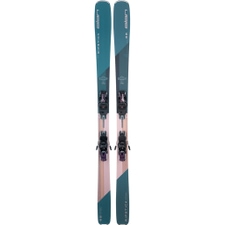 ElanRipstick 88 W + ELW 11.0 21/22 Skis with bindings WomenMSRP 799,95 €299,00 €Available Sizes:178
ElanRipstick 88 W + ELW 11.0 21/22 Skis with bindings WomenMSRP 799,95 €299,00 €Available Sizes:178
- - 46 %
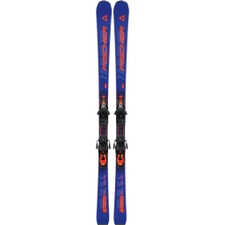 FischerThe Curv DTX + RSX Z12 GW 23/24 Ski with BindingMSRP 1099,95 €599,00 €Available Sizes:164171178
FischerThe Curv DTX + RSX Z12 GW 23/24 Ski with BindingMSRP 1099,95 €599,00 €Available Sizes:164171178 - - 36 %
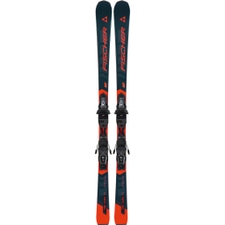 FischerThe Curv Ti + RS 10 GW 23/24 Ski with BindingMSRP 699,95 €449,00 €Available Sizes:157164171178
FischerThe Curv Ti + RS 10 GW 23/24 Ski with BindingMSRP 699,95 €449,00 €Available Sizes:157164171178 - - 33 %
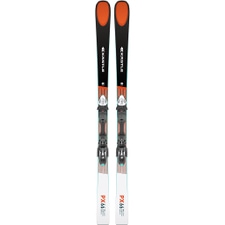 KästlePX66 + K11 PRD GW 22/23 Skis with bindingsMSRP 898,95 €599,00 €Available Sizes:156163170177
KästlePX66 + K11 PRD GW 22/23 Skis with bindingsMSRP 898,95 €599,00 €Available Sizes:156163170177
- - 40 %
 VölklDeacon XT + VMotion 10 GW 23/24 Skis with bindingsMSRP 499,95 €299,00 €Available Sizes:154161168
VölklDeacon XT + VMotion 10 GW 23/24 Skis with bindingsMSRP 499,95 €299,00 €Available Sizes:154161168
- - 38 %
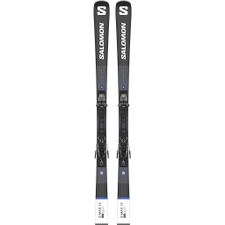 SalomonE S/Max 10 + M11 GW 23/24 Ski with BindingsMSRP 729,95 €449,00 €Available Sizes:160165170
SalomonE S/Max 10 + M11 GW 23/24 Ski with BindingsMSRP 729,95 €449,00 €Available Sizes:160165170
- - 28 %
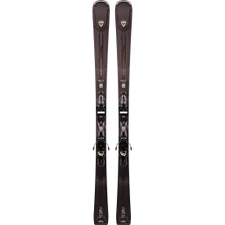 RossignolNova 10 Ti + Xp11 23/24 Ski with Binding WomenMSRP 679,95 €489,00 €Available Sizes:153160167
RossignolNova 10 Ti + Xp11 23/24 Ski with Binding WomenMSRP 679,95 €489,00 €Available Sizes:153160167 - - 30 %
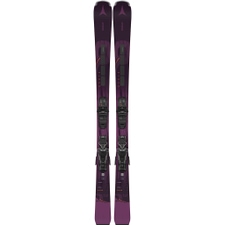 AtomicCloud Q12 Revoshock C + M 10 GW 22/23 Skis with bindings WomenMSRP 849,95 €599,00 €Available Sizes:166
AtomicCloud Q12 Revoshock C + M 10 GW 22/23 Skis with bindings WomenMSRP 849,95 €599,00 €Available Sizes:166
- - 25 %
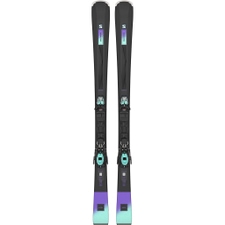 SalomonE S/Max N°6 XT + M10 GW 23/24 Skis with bindings WomenMSRP 479,95 €359,95 €Available Sizes:140150167
SalomonE S/Max N°6 XT + M10 GW 23/24 Skis with bindings WomenMSRP 479,95 €359,95 €Available Sizes:140150167
- - 39 %
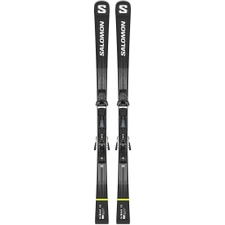 SalomonE S/Max 12 + Z12 GW 23/24 Skis with bindingsMSRP 899,95 €549,00 €Available Sizes:165170175180
SalomonE S/Max 12 + Z12 GW 23/24 Skis with bindingsMSRP 899,95 €549,00 €Available Sizes:165170175180
- - 32 %
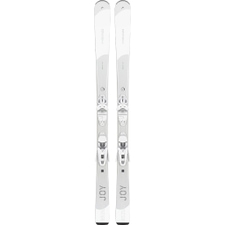 HeadAbsolut Joy + Joy 9 GW SLR 23/24 Ski with Binding WomenMSRP 589,95 €399,00 €Available Sizes:153158168
HeadAbsolut Joy + Joy 9 GW SLR 23/24 Ski with Binding WomenMSRP 589,95 €399,00 €Available Sizes:153158168
- - 25 %
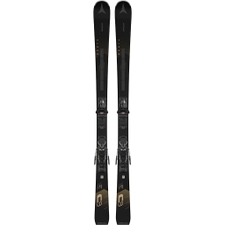 AtomicCloud C9 Revoshock Light + M 10 GW 23/24 Ski with Binding Black/ WomenMSRP 599,95 €449,95 €Available Sizes:143157164
AtomicCloud C9 Revoshock Light + M 10 GW 23/24 Ski with Binding Black/ WomenMSRP 599,95 €449,95 €Available Sizes:143157164
- - 30 %
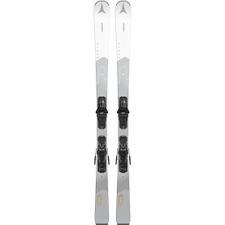 AtomicCloud C8 + M 10 GW 23/24 Ski with Binding WomenMSRP 499,95 €349,00 €Available Sizes:164
AtomicCloud C8 + M 10 GW 23/24 Ski with Binding WomenMSRP 499,95 €349,00 €Available Sizes:164
- - 37 %
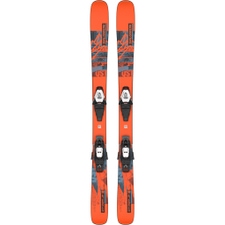 SalomonQST Spark Jr S + C5 GW 23/24 Skis KidsMSRP 269,95 €169,00 €Available Sizes:123133
SalomonQST Spark Jr S + C5 GW 23/24 Skis KidsMSRP 269,95 €169,00 €Available Sizes:123133
- - 34 %
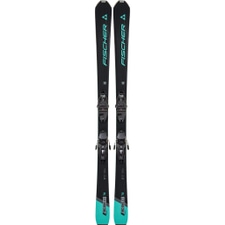 FischerRC One 78 GT TPR + RSW 10 PR 23/24 Ski with Binding WomenMSRP 679,95 €449,00 €Available Sizes:145152159166
FischerRC One 78 GT TPR + RSW 10 PR 23/24 Ski with Binding WomenMSRP 679,95 €449,00 €Available Sizes:145152159166 - - 36 %
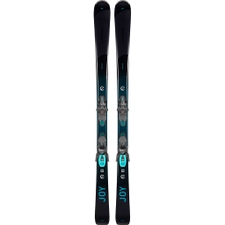 HeadSuper Joy + SLR 11 GW 23/24 Ski with Binding WomenMSRP 699,95 €449,00 €Available Sizes:148168
HeadSuper Joy + SLR 11 GW 23/24 Ski with Binding WomenMSRP 699,95 €449,00 €Available Sizes:148168
- - 36 %
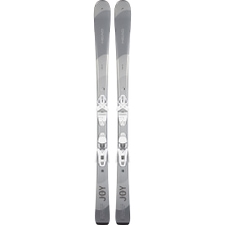 HeadPure Joy + Joy 9 GW SLR 23/24 Ski with Binding WomenMSRP 469,95 €299,00 €Available Sizes:143148153158163
HeadPure Joy + Joy 9 GW SLR 23/24 Ski with Binding WomenMSRP 469,95 €299,00 €Available Sizes:143148153158163
- - 27 %
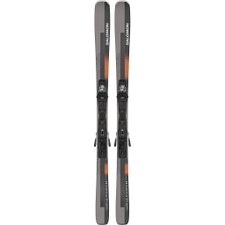 SalomonE Stance 84 + M12 GW 23/24 Skis with bindingsMSRP 679,95 €499,00 €Available Sizes:161169185
SalomonE Stance 84 + M12 GW 23/24 Skis with bindingsMSRP 679,95 €499,00 €Available Sizes:161169185
- - 37 %
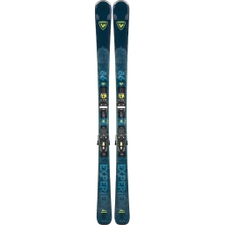 RossignolExperience 86 Basalt + NX 12 Konect GW 23/24 Ski with BindingMSRP 709,95 €449,00 €Available Sizes:158
RossignolExperience 86 Basalt + NX 12 Konect GW 23/24 Ski with BindingMSRP 709,95 €449,00 €Available Sizes:158 - - 29 %
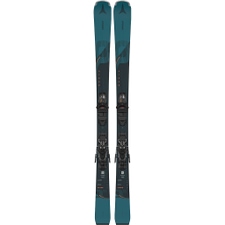 AtomicCloud Q 11 + M 10 GW 23/24 Ski with Binding WomenMSRP 699,95 €499,00 €Available Sizes:146155164
AtomicCloud Q 11 + M 10 GW 23/24 Ski with Binding WomenMSRP 699,95 €499,00 €Available Sizes:146155164
- - 25 %
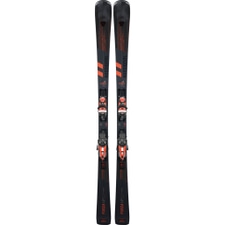 RossignolForza 60° V-TI + NX 12 Konect 23/24 Ski with Binding 000MSRP 759,95 €569,95 €Available Sizes:156
RossignolForza 60° V-TI + NX 12 Konect 23/24 Ski with Binding 000MSRP 759,95 €569,95 €Available Sizes:156 - - 33 %
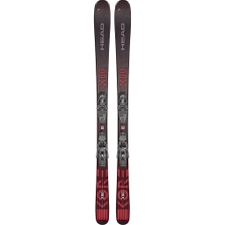 HeadKore X 80 + PRW 11 GW 23/24 Ski with BindingMSRP 599,95 €399,00 €Available Sizes:163170177
HeadKore X 80 + PRW 11 GW 23/24 Ski with BindingMSRP 599,95 €399,00 €Available Sizes:163170177
- - 33 %
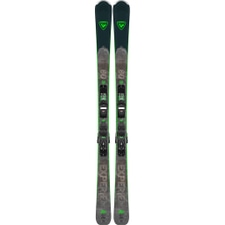 RossignolExperience 80 Carbon + XP 11 GW 23/24 Ski with BindingMSRP 519,95 €349,00 €Available Sizes:182
RossignolExperience 80 Carbon + XP 11 GW 23/24 Ski with BindingMSRP 519,95 €349,00 €Available Sizes:182 - - 42 %
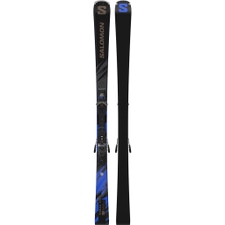 SalomonE S/Max 10 XT + M12 GW 23/24 Skis with bindingsMSRP 779,95 €449,00 €Available Sizes:170
SalomonE S/Max 10 XT + M12 GW 23/24 Skis with bindingsMSRP 779,95 €449,00 €Available Sizes:170
- - 25 %
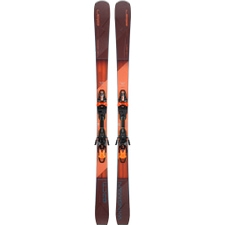 ElanWingman 82 CTi FX + EMX 12.0 23/24 Skis with bindings OrangeMSRP 899,95 €674,95 €Available Sizes:160166
ElanWingman 82 CTi FX + EMX 12.0 23/24 Skis with bindings OrangeMSRP 899,95 €674,95 €Available Sizes:160166



As the name suggests, an all-mountain ski is well suited for the entire mountain. Whether on the slopes or for freeride adventures in the terrain, this ski is an absolute all-rounder. And accordingly, it also comes in a wide variety of shapes and variations. With center widths from about 70 mm up to 100 mm, the most diverse rocker constructions, weights and stiffnesses, there are all-mountain skis for beginners, advanced skiers and experts. All of them are well suited for both on and off-piste. But due to their specific characteristics like ski waist, some are more on-piste oriebtated, others more off-piste.
CHARACTERISTICS OF THE ALLMOUNTAIN SKI
On-piste, this ski is turn-friendly and playful. Although not quite as super sporty as an on-piste ski, it can be used to apply decent pressure on the edges and make speed. At the same time, it offers float in untracked terrain, fresh pow or ungroomed terrain. And even in the ragged and blown slopes, the all-mountain ski is certainly stable on the move. No matter what the snow conditions, the Allmountain Ski shines with its versatility and performs almost everywhereon the mountain!
Decisive for the buoyancy in powder are the center width and weight of the ski. The wider and lighter the ski, the better it floats in powder. But a heavier ski also has some advantages. More weight makes the ski more stable, especially in hard terrain. Together with the torsional stiffness, the weight is also important for edge pressure. The stiffer the ski is around its own axis, the better pressure can be exerted on the edges, which is extremely important for sporty skiers on hard slopes. The weight of the ski is largely dependent on the fabrics used and the ski core. Many manufacturers rely on wooden cores, often paulownia or balsa, which is particularly light. To keep the ski stable even at such a light weight, metal is used in various ways: Metal laminate in the edge area or titanium inserts provide additional stiffness.
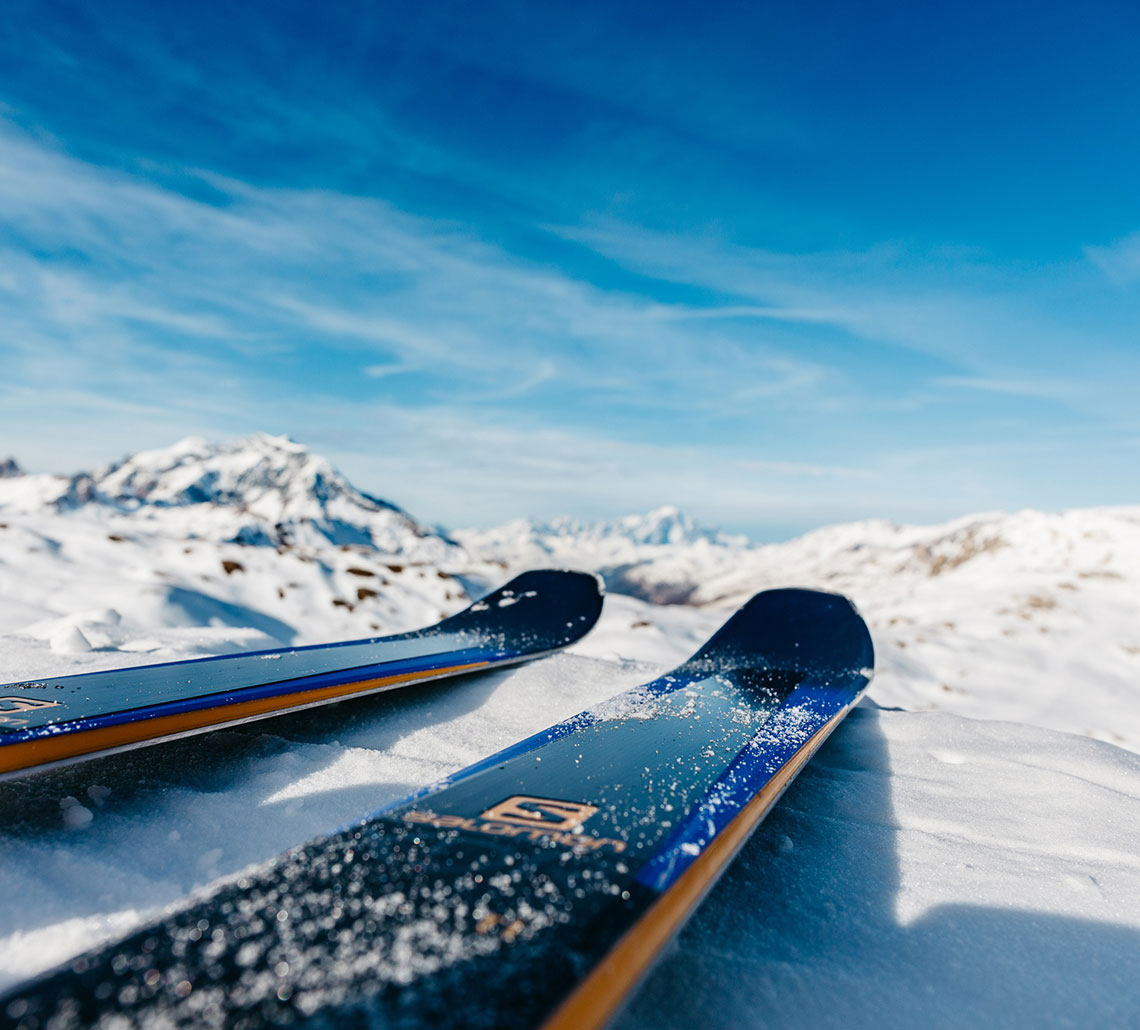
The ski's handling characteristics are also, as with any other ski, dependent on its radius. Allmountain skis are available with different radii, from around 10 to 20 meters. Generally, especially the wider skis also have a larger radius, as they are less tailored.
ROCKER AND CAMBER CONSTRUCTION OF THE ALLMOUNTAIN SKI
Many of our all-mountain skis with bindings are equipped with rocker constructions. Either with a so-called Tip-Rocker at the front shovel or with a Tip & Tail Rocker, i.e. rockered at the front and back. Rockers make it easier to turn around the ski and thus enable easier turn initiation. This makes skiing easier both on and off piste. The next step up from the tip or front rocker is the tip and tail rocker, which is slightly bent up at the front and back.
However, a good number of all-mountain skis with bindings also come with the classic construction without rocker: the full camber construction. The classic camber has its strengths above all on the piste. When the ski has a positive camber, the contact points on an unloaded ski are at the shovel and the tail of the ski. This means that there is always a distance to the snow under the binding. As soon as pressure is applied to the ski, the ski is under tension and gains continuous edge contact. This is particularly advantageous at high speeds and in tougher conditions.
CHOOSING THE RIGHT ALL-MOUNTAIN SKI
Which all-mountain ski is the right one for you depends largely on your skiing ability and style, as well as the intended area of use. Those who want to use their skis regularly on the slopes, step on the gas and only occasionally launch into the backcountry are well advised to go with a narrower all-mountain ski. Conversely, those who are more in the freeride area should rather reach for a wider all-mountain ski.
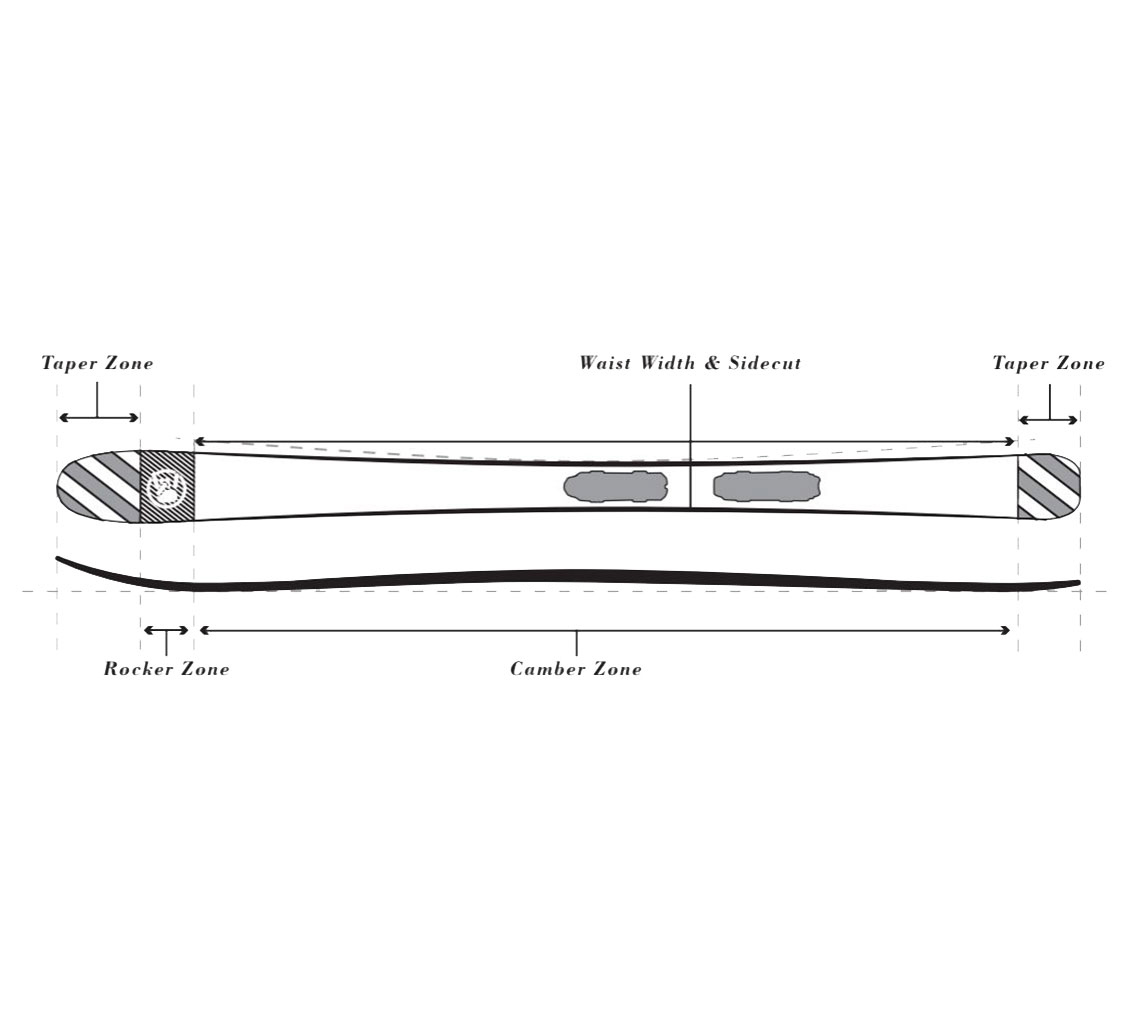
In between, of course, everything else is possible. And the choice is huge. To get started well prepared these skis com with the proper binding included.
TAKE CARE OF THE RIGHT SIZE
For beginners, the ski should go to about eye level. This makes the ski more maneuverable and accordingly easier to ride. For advanced skiers and experts, rather on body height, plus/minus 5cm. The longer, the smoother the ski.
So if you can't decide between piste and off-piste, an all-mountain ski is exactly the right choice. If you start off-piste with your all-mountain ski, please don't forget the necessary safety equipment, such as avalanche equipment. On piste, a helmet and a protector will add significant safety.